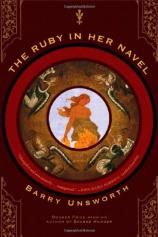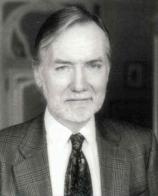Reading Group Guide
Discussion Questions
The Ruby in Her Navel: A Novel

1. When Thurstan meets Spaventa in Potenza, the assassin tells him that “it is only in ignorance of our fellow man that we can love him.” How do Spaventa’s words resonate throughout the rest of the story? And why is it important that an assassin—a character so thoroughly evil—point out the folly of ignorance to Thurstan?
2. What is the role of sin in the world Unsworth has created? How does it guide Thurstan’s actions, and what is the significance of Nesrin’s belief in a world without sin?
3. Throughout The Ruby in Her Navel, King Roger is obscured by light. Thurstan, his loyal servant, has never seen the King’s face. Why, when Thurstan finally sees the King’s visage, does his sight fail him? How does this moment change Thurstan? And why did he not see the King as mortal before?
4. At one point, Yusuf quotes the Koran to Thurstan: “But that mankind would become one people we would have given those who denied merciful God silver roofs for their houses and stairways to mount them.” What does this verse say about religious tensions rife in twelfth-century Sicily and about the bloody Crusades? What is Yusuf trying to tell Thurstan about the dangers of belief?
5. What are Thurstan’s personal insecurities? And how do they make him the perfect prey for Abbot Alboino, Bertrand of Bonneval, and Lady Alicia’s trap? What did you think of Thurstan? Where you able to forgive him his weaknesses by the end of the story?
6. With the exception of Yusuf, all of Unsworth’s characters—even King Roger—seem very human in their desires, motivations, and impulses. Why does Yusuf seem above this? What does he symbolize?
7. After reading the memoirs of Abbot Guibert of Nogent, Thurstan remarks, “Strange it seemed to me that a man’s name would endure only for one cut with a sword when those whose lives are full of good works lie nameless and forgotten below ground.” How does this statement show Thurstan’s need for recognition and remembrance? Who are the good and forgotten men in this story? Is the admiration Thurstan expresses for them in this remark reflected in his actions toward them?
8. What are the roles of light and shadow in this story? How do they tie into the roles of trust and suspicion? And does Thurstan’s story ultimately tell us that suspicion should be valued over trust and love?
9. The racial and religious tensions of the Sicilian melting pot under King Roger’s rule resonate strongly in today’s world. Are the motives of Abbot Alboino, Bertrand of Bonneval, Atenulf the Lombard, Gerbert, Wilfred, and King Roger recognizable in today’s leaders? And does Thurstan’s ignorance make him complicit in their schemes or does it exonerate him? Is it enough that Thurstan aspires to be good? What do Thurstan’s actions and motives say about the role of the courtier in the Middle Ages and about the role of a citizen in today’s society?
10. Nesrin’s story is inextricably tied to that of Thurstan, but for most of the book she remains in the background—an object of Thurstan’s lust who causes him shame and feelings of debasement. But at the end of the story, it is Nesrin who teaches Thurstan to see the world differently, by saying, “You make a shape that is not true and you keep to that shape and do not see it is the wrong one.” What is the significance of Nesrin’s statement? And why is it important that Nesrin—a landless, title-less gypsy—be the one to impart this message to Thurstan?
The Ruby in Her Navel: A Novel
- Publication Date: November 17, 2007
- Paperback: 400 pages
- Publisher: W. W. Norton & Company
- ISBN-10: 0393330826
- ISBN-13: 9780393330823








